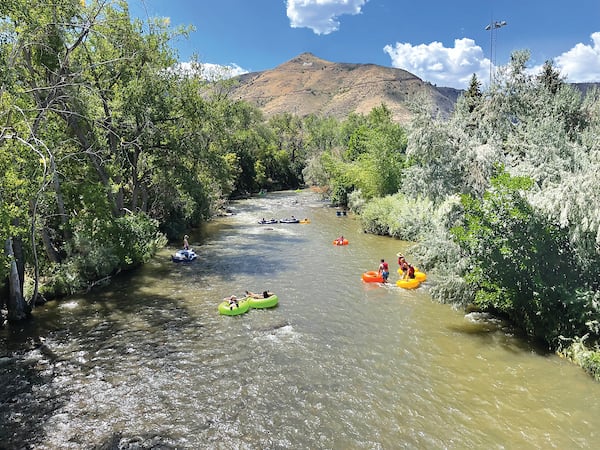
When Noor Hamdan was a child, she not only collected wildflower bouquets to present to her mother, but she also researched their scientific names and cataloged the specimens in a book that still sits on her bookshelf today.
“Being in nature is my favorite thing in the world,” says Hamdan, a PhD candidate in the lab of Carsten Prasse, assistant professor in the Department of Environmental Health and Engineering.
So she jumped at the opportunity to collaborate on a study Prasse proposed, which was aimed at exploring the impact that recreational activities, specifically floating down a river on an inner tube, might have on water quality.
“We really were interested in what the tubers themselves were bringing into the streams compared to what was already naturally present,” says Hamdan. Such questions are timely, given concerns around climate change, hotter summers, and dropping water levels.
Working with researchers at the Colorado School of Mines, the team examined water samples collected from Clear Creek, in Colorado, over a busy Labor Day weekend, and then several days later, when river traffic was slow. The team also collected samples upstream of the main “put-in” point for tubers. Sampling varied by time and location so the researchers could isolate the effects of the heavy activity in that popular spot.
The researchers analyzed the samples using a mass spectrometer, which measures the masses of carbon-containing molecules with very high precision, creating “chemical fingerprints” that can be matched to a library of known substances.

Hamdan says many of the chemicals they found in samples from the put-in spot during high-traffic times are assumed to have washed off human skin or been excreted in urine: chemical sunscreens, prescription and over-the-counter medications, DEET bug repellant, and personal hygiene products—even traces of cocaine. The control samples had little or no traces of these substances.
“We now know that these compounds are in the river,” says Hamdan. Their results appeared in ACS ES&T Water. “[While] we don’t know their concentrations or how they impact the fish or other species in the environment, this kind of work is mostly used to bring to light gaps in research knowledge related to recreational activities in freshwater systems with frequent use [by humans].”
Now that she knows what’s floating around in popular recreational waterways, Hamdan said she’s not going tubing anytime soon.
“This research has definitely opened my eyes to a lot of different chemicals that I use in my day-to-day life,” she says, “and which products I’m more likely to use,” such as mineral sunscreens, which are less toxic for the environment.




